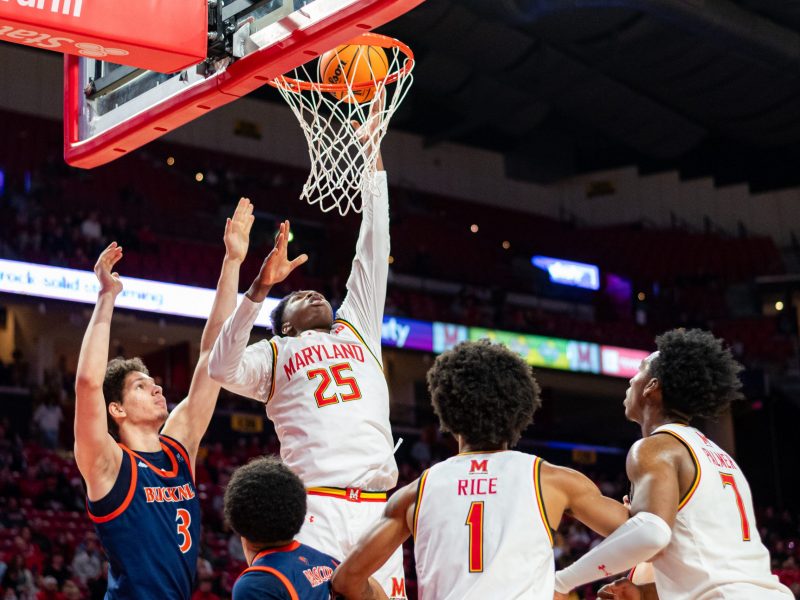By the end of Maryland women’s lacrosse’s Saturday matchup against Syracuse, the game had shifted from a shootout to a tactical, defensive duel. The Terps needed a stop.
With the score tied at 11 — against the No. 4 team in the country, and just under 10 minutes remaining in regulation — Maryland turned to preseason All-American Julia Braig and the rest of its defense to stifle a fast-paced Orange attack.
As Syracuse quickly moved the ball, Maryland focused on its man-to-man defense, and Braig ultimately poked the ball away to regain possession. For the ensuing nine minutes, the defense came up clutch, time and time again, to hold the Orange scoreless and force overtime. In the extra period, the Terps came out on top, 12-11.
Maryland’s ability to shut down offenses — particularly against the three top-five teams they’ve played — has been key to its undefeated start and will be called upon again when the team faces No. 6 Penn on Wednesday.
“We just focus a lot on the next play,” defender Lizzie Colson said. “Learn from what just happened and focus on getting better.”
[Read more: Against another top-5 foe, Maryland women’s lacrosse came through in crunch time]
The Terps have remained stingy against some of the best teams in the country. Syracuse, North Carolina and Florida have each scored at least two goals fewer than their season average against Maryland. The team is allowing 8.33 goals per game, a significant improvement from last year’s average of 9.91.
“Our defense was really young last year,” coach Cathy Reese said. “This group has played together for a while [now].”
With that experience, the Terps have learned how to stop opponents in a variety of ways.
[Read more: No. 2 Maryland women’s lacrosse beats No. 4 Syracuse in double overtime, 12-11]
They can force turnovers, like when defender Meghan Doherty pressured North Carolina attacker Katie Hoeg into an errant pass with 4:29 remaining and the game tied.
They can contest opposing shots, like when midfielder Jen Giles caused Syracuse attacker Megan Carney to fall to the ground as she tried to get a look at goal with 4:19 remaining, leading to an easy save from goalkeeper Megan Taylor.
“That we can come through huge when the game is on the line was awesome to see,” Reese said.
Maryland consistently plays man-to-man defense, with Reese putting a hefty amount of trust in her team to shut down some of the best offensive players in the country.
Thus far, the system has worked. The Terps held attacker Emily Hawryschuk — Syracuse’s main scorer — to 4-for-9 shooting on few clean looks. Hoeg received similar treatment from the Terps, scoring only once and assisting twice, well below her season averages.
There have been moments of weakness for the Terps. Florida attacker Lindsey Ronbeck scored eight times against Maryland, and Hofstra attacker Katie Whelan put up five on March 2.
“We’re in a good spot defensively,” Reese said. “But obviously there’s always room for improvement.”
No matter how strong the Terps’ defense is, they are still going to allow some shots. And when that happens, they can take solace in having one of the nation’s best keepers behind them.
After Braig’s big play caused a turnover against the Orange, Maryland still had to weather four more Syracuse attempts on goal — and Taylor saved all four.
“Of course, Megan Taylor has us in goal,” Colson said. “That’s always helpful.”



